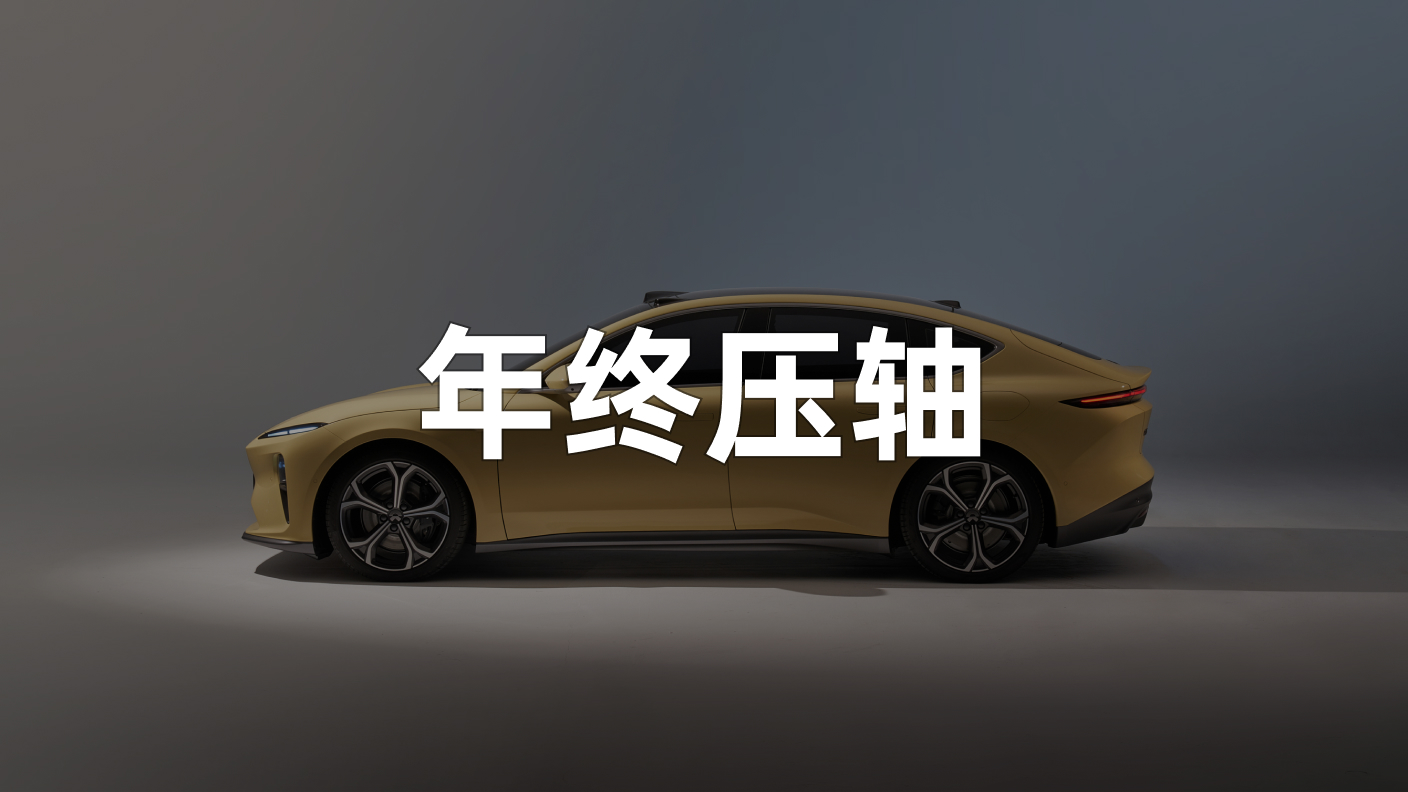English Markdown Result
Today, the NIO ET5 was officially launched, with the following prices:
-
Whole Vehicle Purchase Plan
-
70 kWh version: CNY 328,000
-
100 kWh version: CNY 386,000
-
Battery-as-a-Service (BaaS)
-
70 kWh version: CNY 258,000 (battery monthly fee of CNY 980)
-
100 kWh version: CNY 258,000 (battery monthly fee of CNY 1,480)

After the price was announced, I have seen more than 20 orders around me. This is an unprecedented phenomenon.

However, at the end of 2021, there are already many products on the market with similar or comparable prices and performance. Some have been launched for more than three years, while others have just started delivery. What is the actual competitiveness of the ET5, and how does it compare with other competitors in the same market segment?
Today, we have selected several competing models including the Tesla Model 3, the XPeng P7, the Li Auto One, and the BMW 3 Series, and performed a comprehensive comparison.

Note: we apologize for comparing the ET5, which will be delivered more than 10 months later, with products that have already been delivered. However, these are the only competitors we have known thus far.
The ET5 Does Not Have Advantage in Size
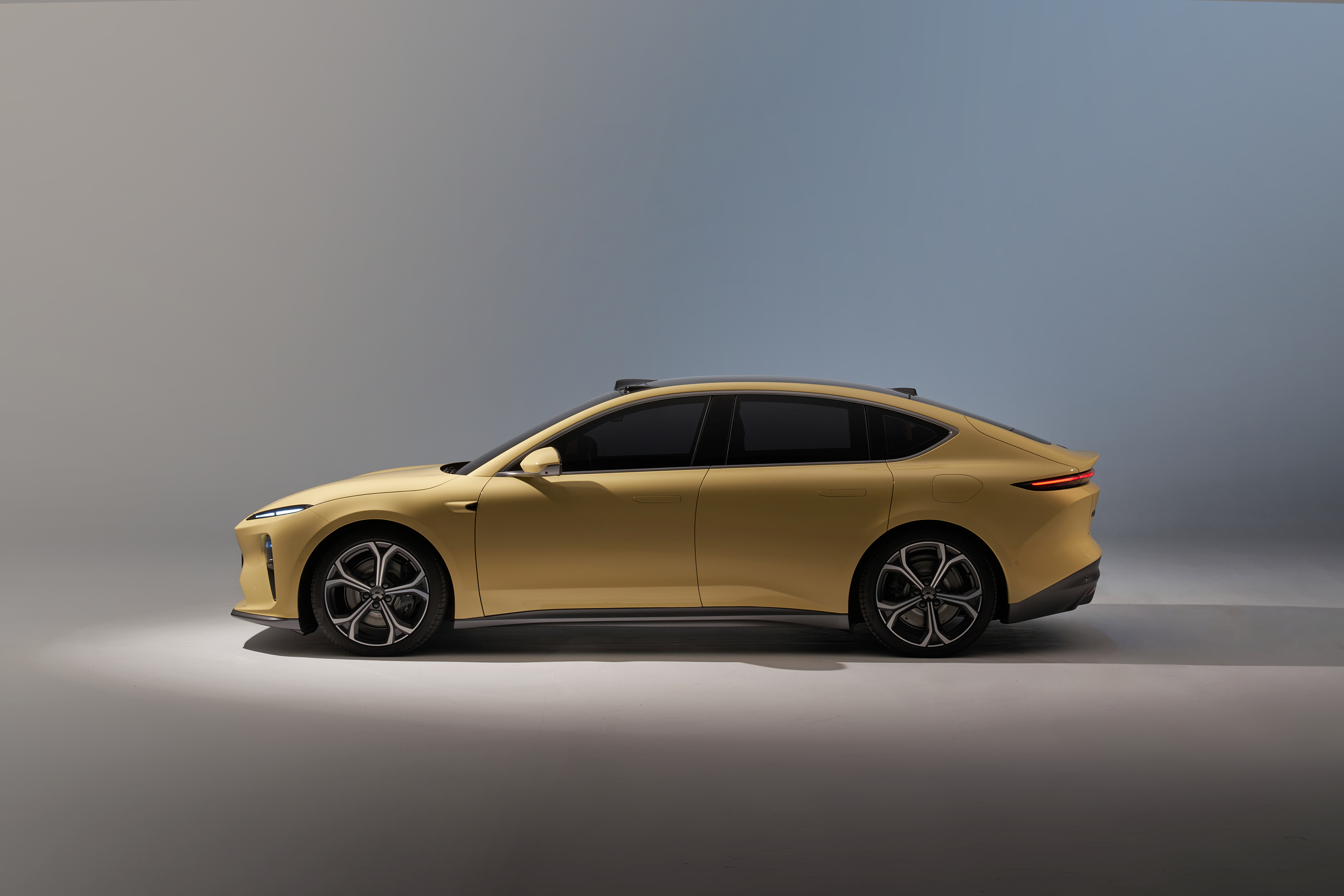
First, let’s talk about the appearance. The ET5 has a body length of 4,790* 1,960*1,499 mm and a wheelbase of 2,888 mm.
As a midsize car, its body size is between that of the Tesla Model 3 and the long-wheelbase BMW 3 Series. Its wheelbase is only 13 mm longer than that of the Model 3, and is inferior to the wheelbase of the Li Auto One and the XPeng P7, both of which have a wheelbase of nearly three meters.
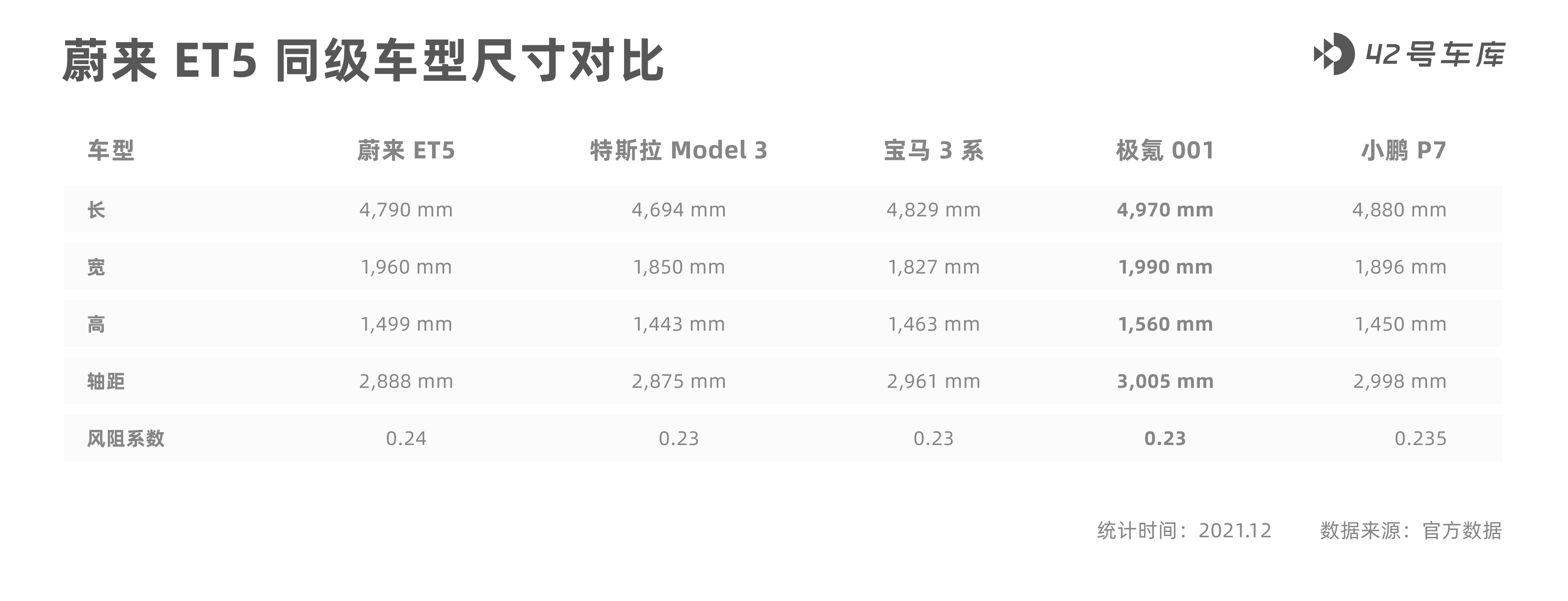 Although ET5 does not have a clear advantage in terms of data, it is obvious that it doesn’t appear just to be “large”. What we are more concerned about is the actual space utilization rate. We will share it with you after we have experienced it in person. It can be anticipated that ET5 will not have much advantage over the space aspect compared with the extremely rare 001 and the BMW 3 Series, and will be more similar to the level of Tesla Model 3 and XPeng P7.
Although ET5 does not have a clear advantage in terms of data, it is obvious that it doesn’t appear just to be “large”. What we are more concerned about is the actual space utilization rate. We will share it with you after we have experienced it in person. It can be anticipated that ET5 will not have much advantage over the space aspect compared with the extremely rare 001 and the BMW 3 Series, and will be more similar to the level of Tesla Model 3 and XPeng P7.
As for the exterior design, ET5 is the same in design as ET7, both using the NIO family style X-Bar front face design. We will not make too much evaluation on the aesthetic aspect, and it is up to everyone to compare.
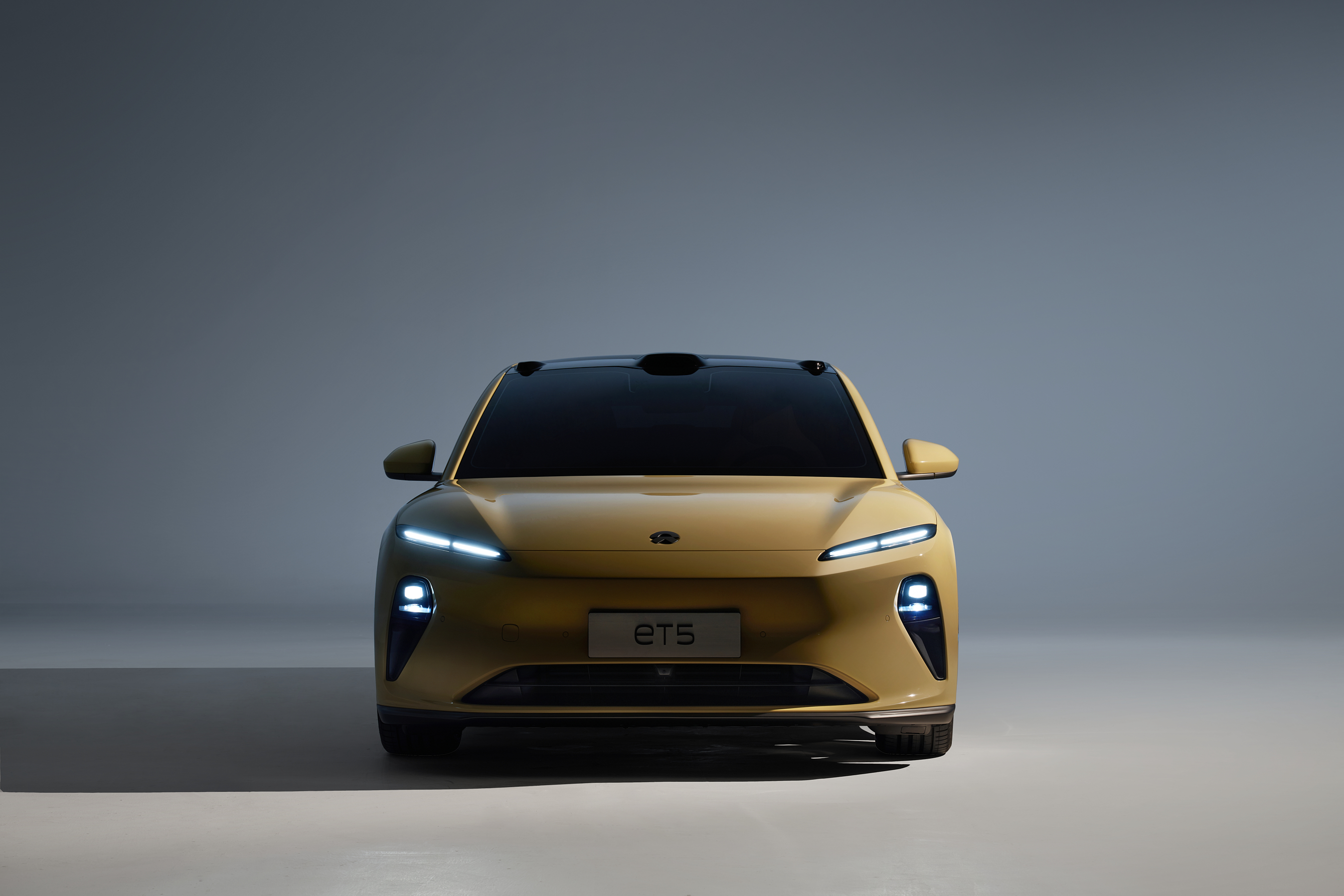
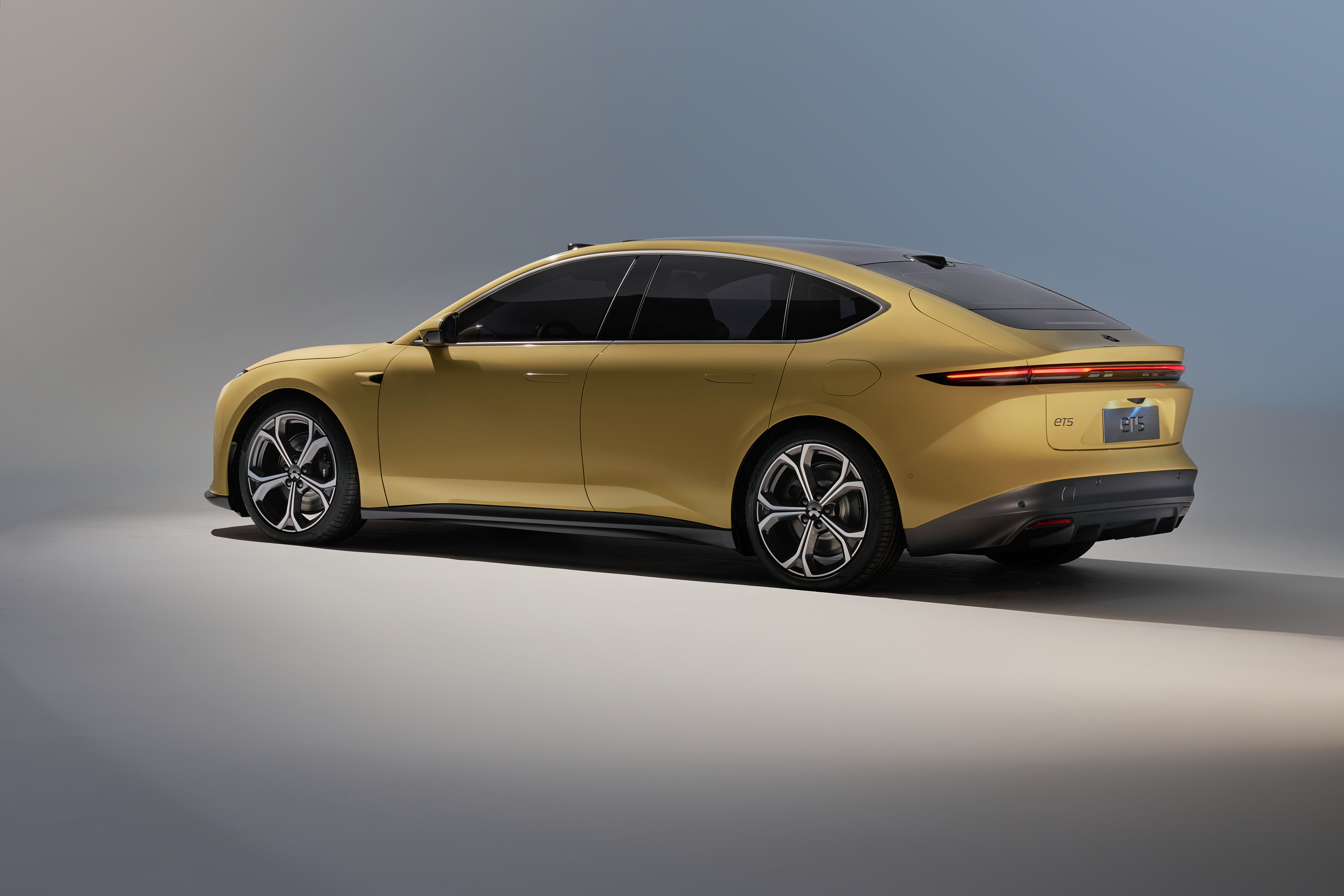
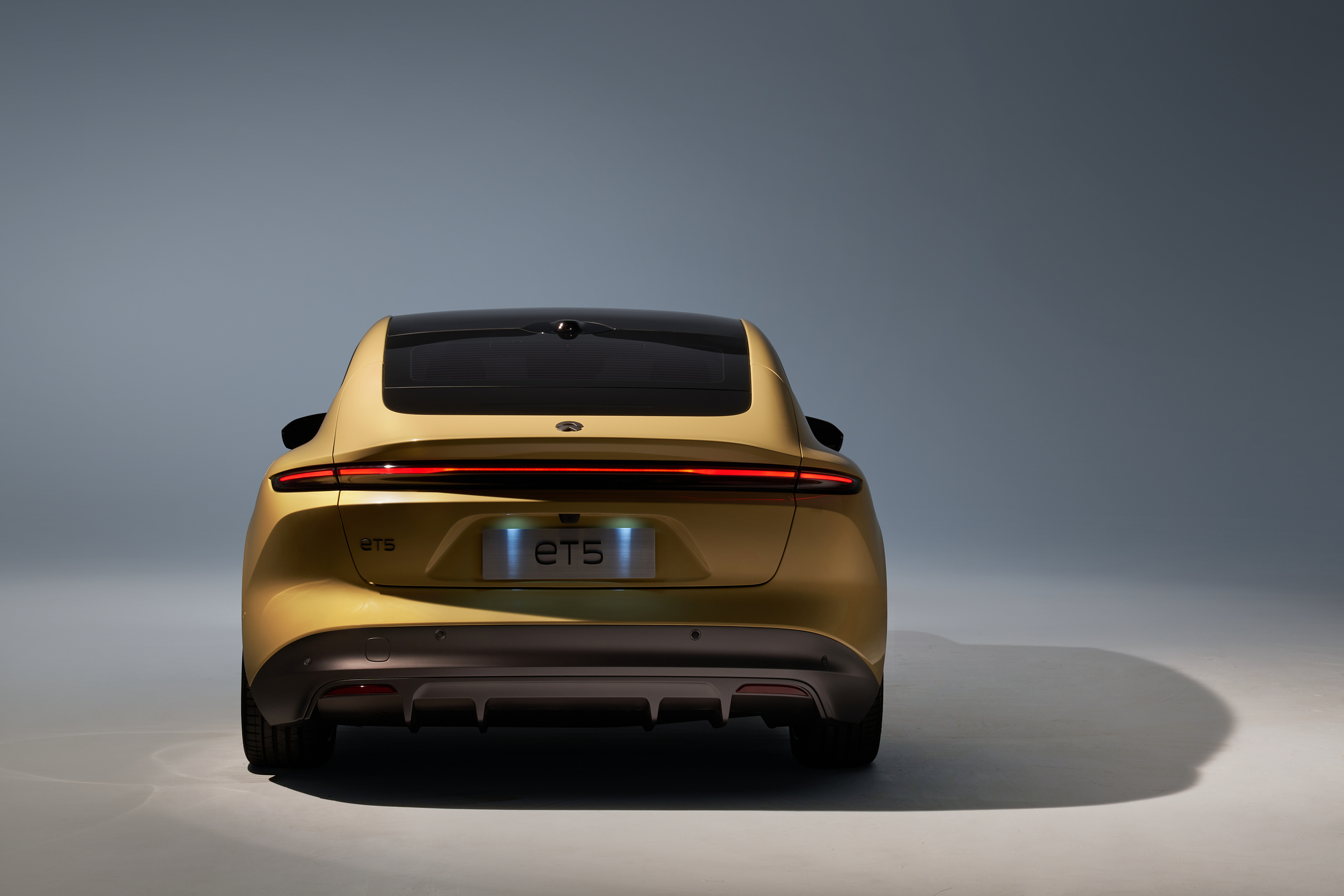
There are three points about the exterior that are worth mentioning.
First, there are a total of eight colors to choose from for the ET5, among which the Cloud Sun Yellow, Mirror Sky Pink, and Aerospace Blue are exclusive to the ET5. This makes it the most boldly colored model among the NIO series.

Second, the drag coefficient of the ET5 is 0.24, and the size of the drag coefficient will directly affect the high-speed cruising range. Compared to the 0.208 of the self-made ET7, this data may not be the best but it is still not far from others that are at 0.23 or 0.235.
Third, the rear of the NIO car uses a lift-back design, and there is a diffuser at the bottom of the rear, which can provide space for deceleration and expansion of the air flow under the car to reduce the upward force of the chassis, and effectively improve downforce.
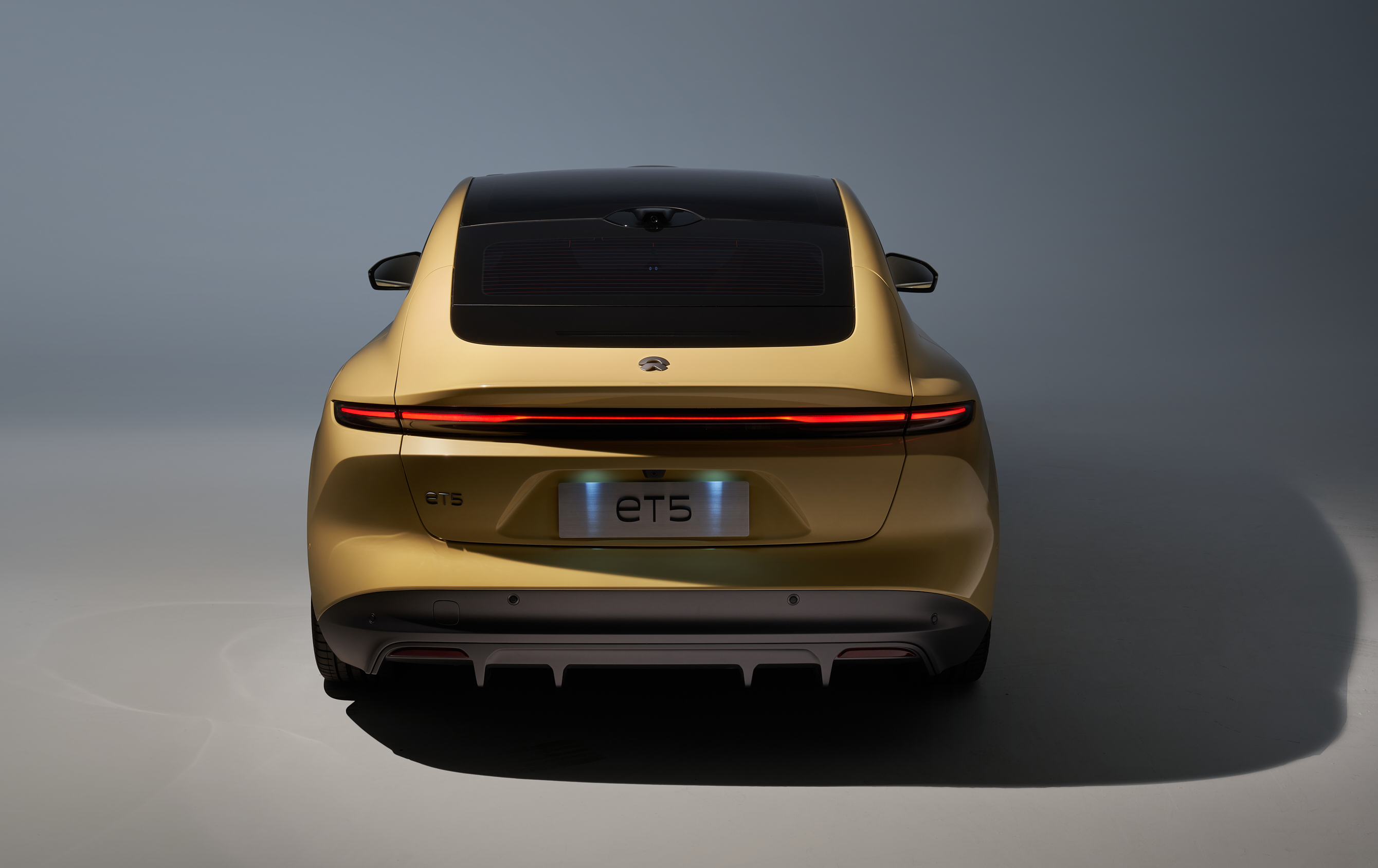
In summary, there is not much difference in the appearance, and everyone has their own style and preferences.
Regarding the cruising range, as a fuel-powered car, the BMW 3 series relies on a rich fuel station network, which has the greatest advantage.
In a comparison of four electric cars, the NIO ET5 and the Jinkr 001 have the largest battery capacity and reach a range of 700 km and 712 km, respectively. The XPeng and Tesla follow with ranges of 670 km and 675 km.

Simply comparing prices, the ET5, which has a 100 kWh battery, costs 386,000 yuan, far surpassing the Jinkr 001’s 299,000 yuan and also greatly exceeding XPeng and Tesla. If the price dimension is the same, the range of the ET5 is limited to 500 km.
From the perspective of range and price, the ET5 does not have any advantages, but the ET5 has two BUFFs in BaaS and battery swap.
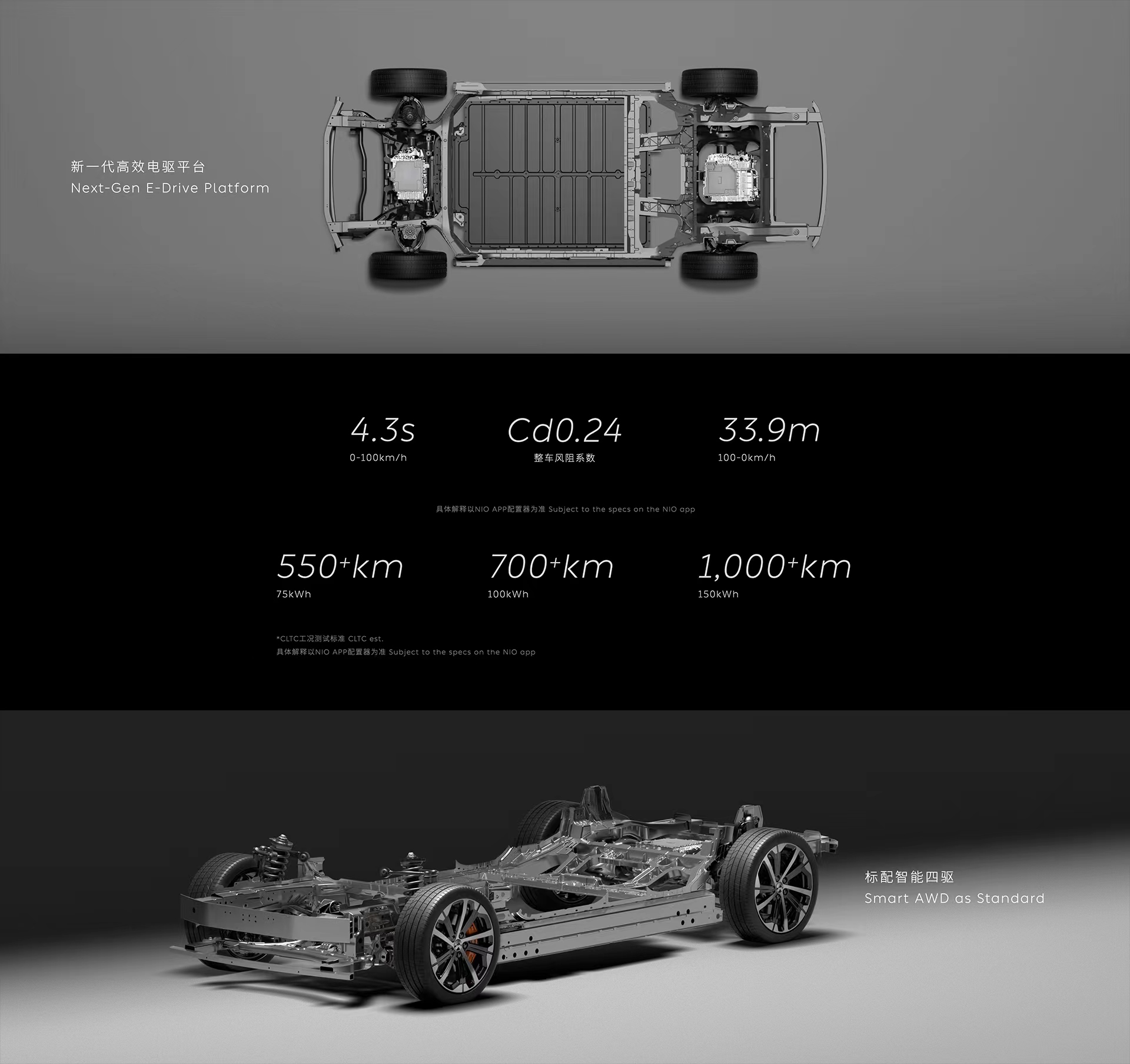
Let’s talk about BaaS
A major advantage of BaaS is that the price of the battery is separated from the car, so the upfront cost can be lowered significantly. However, compared to other car models, an additional monthly rental fee of 980 yuan or 1,480 yuan is required for the battery.
In the case of not considering financial returns, both options result in costs higher than buying out directly after 6 years of use. If the car is only expected to be used for 6 years, BaaS is very cost-effective.
Although the price after 6 years is already higher than the buyout cost, BaaS still has advantages considering the development of battery technology and battery degradation.
Let’s talk about battery swap
The above discussion is based on the demand for single-trip range, but the current mileage anxiety is not the focus, and the issue of power replenishment is actually the concern.
BMW 3 Series relies on a vast network of gas stations, which gives it an absolute advantage at present.
The remaining 4 players are not bad, and each of them realizes this problem and is frantically laying out their own energy replenishment systems.
- NIO
- Supercharging stations 564
- Battery swap stations 733
- Tesla
- Supercharging stations 1,000+
- XPeng
- Supercharging stations 550+
- Jinkr
- Supercharging stations 66
We consider the construction of energy replenishment systems from two dimensions: speed and quality.
In terms of construction speed, these four players are already in a state of working hard, but NIO and Tesla are faster in laying out infrastructure, while their current foundation is also larger.
In terms of construction quality, NIO’s supercharging stations are mostly 120 kW, which is not a significant advantage, but the 733 battery swap stations absolutely dominate all other supercharging stations in term of replenishment speed.The more important thing is that the charging and swapping network has covered multiple traffic and tourist hotlines in our country. At the press conference, Li Bin casually mentioned that “next year we will accelerate the construction of the charging and swapping energy supplement system.”
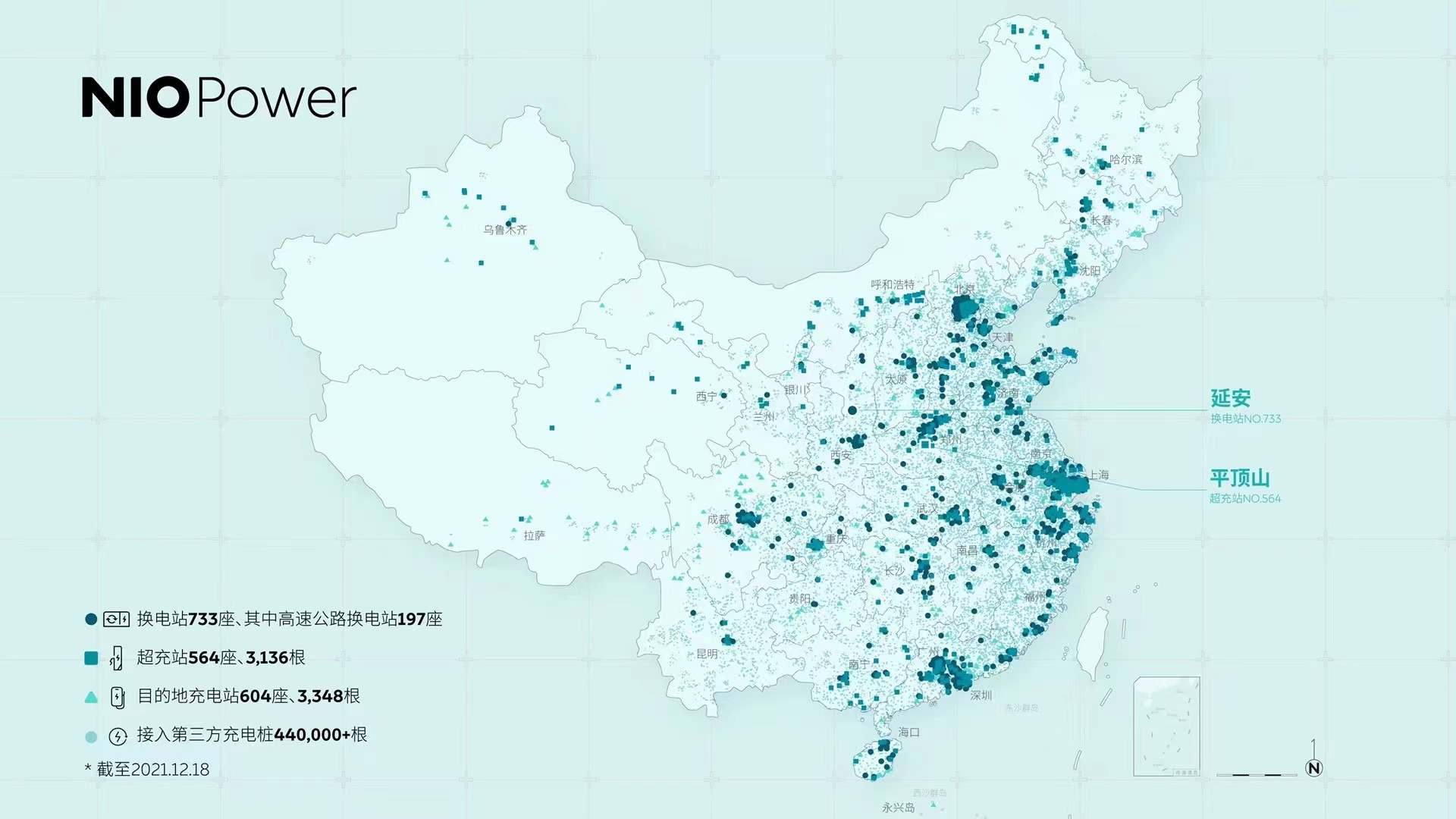
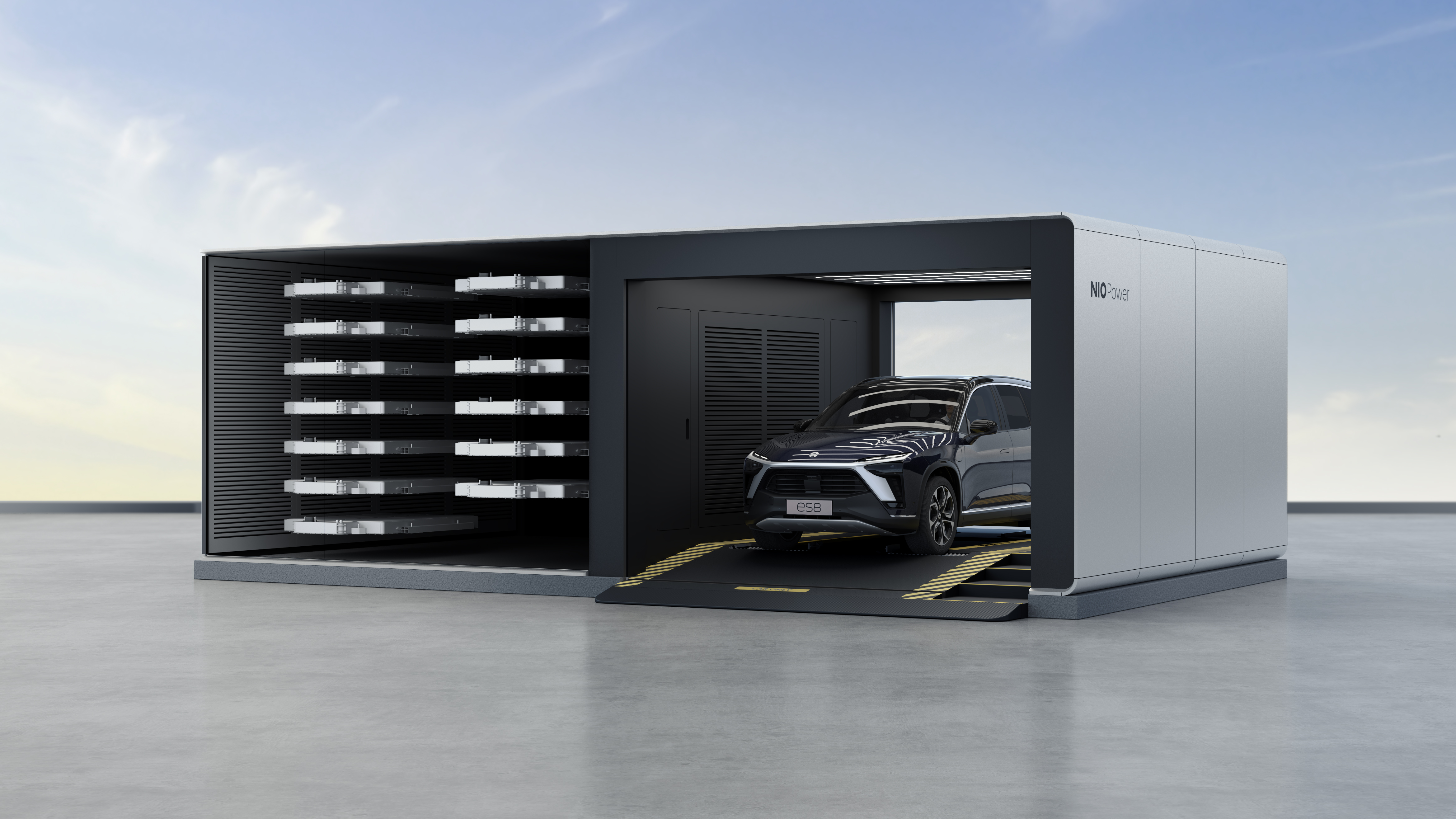
Tesla ranks second, with a large number of 250 kW V3 Superchargers already installed, ensuring their leading position in the next 3-5 years.
Although Xpeng ranks third in terms of numbers, compared to other car companies, it already has an absolute advantage. Unfortunately, the peak output power of its Superchargers is still only 90/120 kW, and the 480 kWh Supercharger released in October this year has not yet started deployment.
Although XPeng’s Power chargers have a power of 360 kW, the highest number of deployed chargers is still 120 kW Superchargers, and there is still a gap compared to the top three in terms of quantity.
To sum up, at this point in time, the BMW 3 Series burning fuel still leads gasoline cars in terms of both range and convenience of energy supplementation, but its use cost far exceeds that of gasoline cars.
Of the 4 electric cars in the same price range, the ET5’s range is the shortest. However, it excels in upgradeability and energy supplementation convenience.
Performance is the strength of the Model 3 Performance
The ET5 still has a dual-motor system, consisting of a front permanent magnet synchronous motor and a rear asynchronous induction motor. The maximum power of the front and rear motors is 150 kW and 210 kW, respectively, with a total power of 360 kW and peak torque of 700 Nm. It can accelerate from 0 to 100 km/h in 4.3 seconds.
In addition, the ET5’s motor will use silicon carbide modules, commonly known as SiC MOSFET, which can bring two benefits; greater instantaneous current output and energy savings.

Compared with models at the same price, the ET5’s 4.3 seconds can crush the BMW 3 Series, but it has no advantages compared to other electric cars.
In terms of handling, as a new force, the performance of the ET5 cannot be satisfactory, and how much improvement can be made remains to be seen.Summary, if you prioritize performance and handling, choose Tesla Model 3 and Xpeng P001.
Smart driving hardware ET5 maxed out, but Tesla’s software capability still dominates
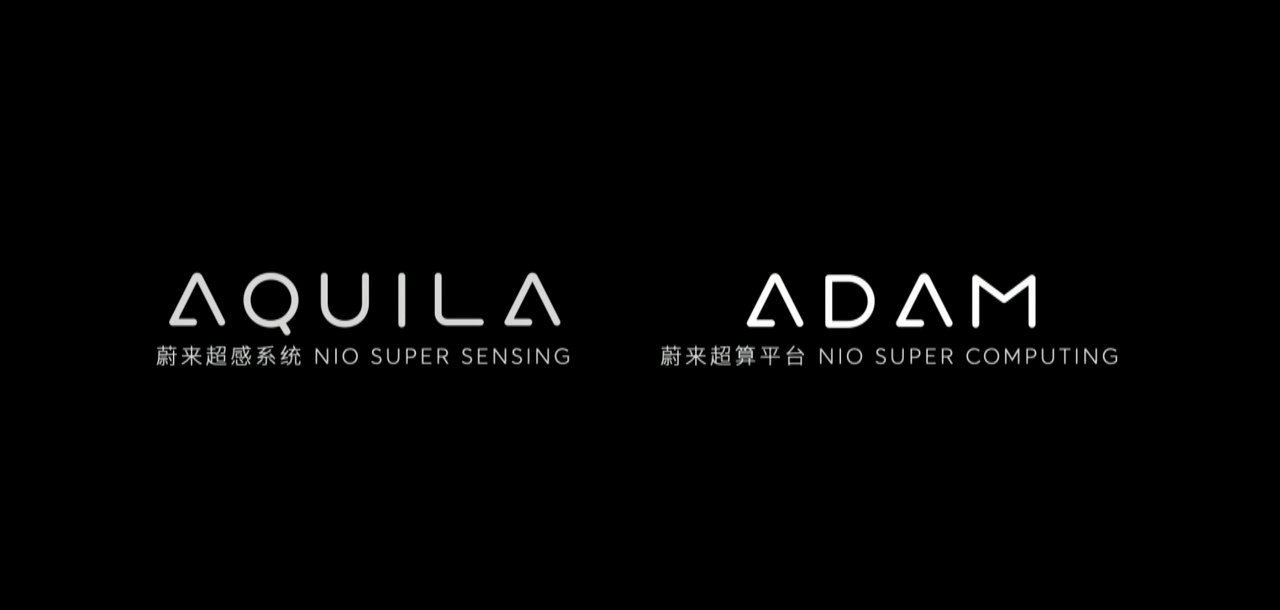
At the beginning of the year, when ET7 was released, its high-level assisted driving hardware ability was enough to make people exclaim in surprise. ET5 perfectly inherited the high configuration of ET7, and also uses the NIO ADAM supercomputing platform and Aquila super-sensing system, with the following core hardware:
- 1 super long-range LiDAR;
- 7 8 million pixel high-definition cameras;
- 4 3 million pixel surround view cameras;
- 4 Nvidia Orin X chips with a total computing power of 1,016 TOPS.
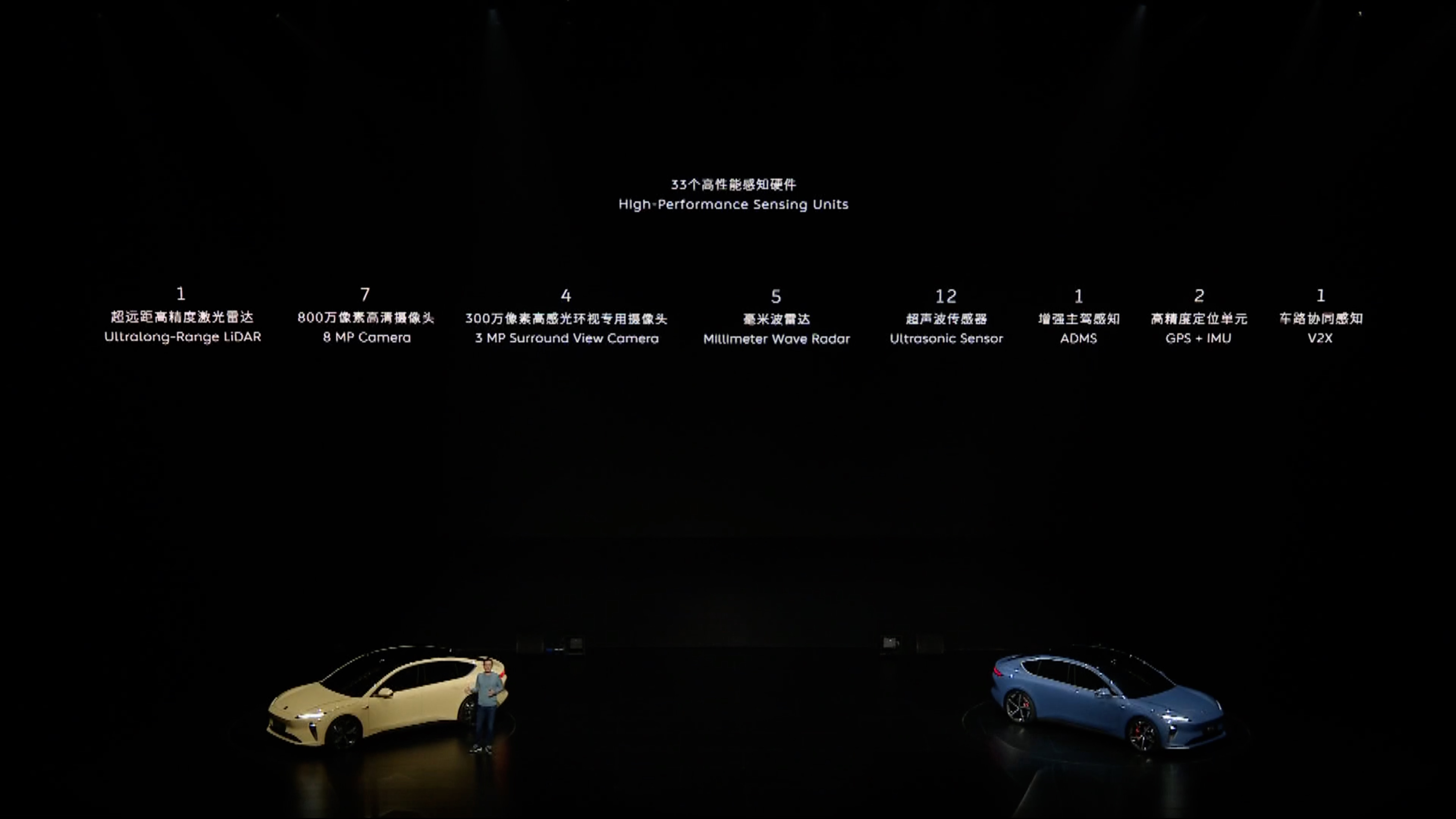
The only difference between the hardware and the family flagship ET7 is that the surround view cameras of ET5 are “castrated” from 8 million pixels to 3 million pixels, but these four cameras are provided by Sony.
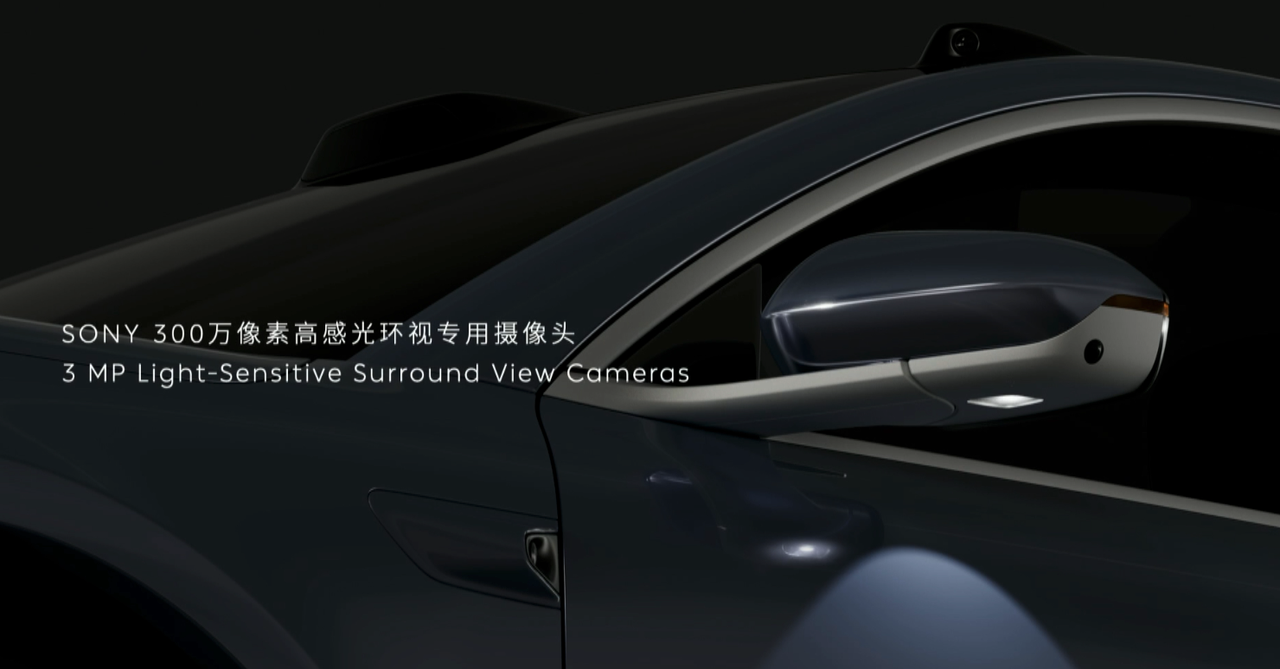
NIO’s intention to pile up hardware is very clear, which is to use the richest hardware for intelligent driving.
Although the hardware is at the top, this only determines the upper limit of ability, and the lower limit depends on software capability. At this stage, NIO’s NT 1.0 models do not have outstanding performance in software, and the core perception algorithms are still provided by Mobileye. Therefore, NIO’s software capability is still a question mark.
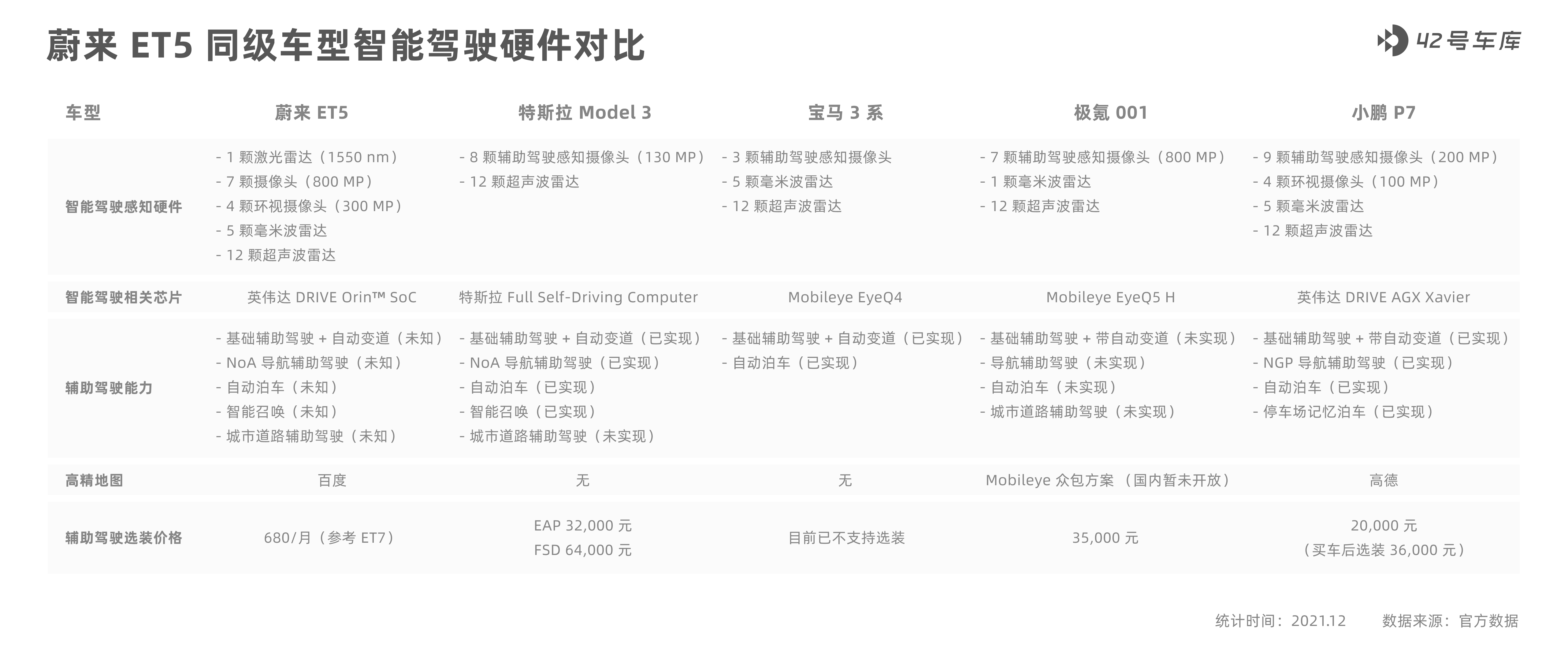
In terms of software capability, Tesla’s FSD in North America and Xpeng’s City NGP have already shown off their muscles. Therefore, in terms of intelligent driving, NIO has the strongest hardware, but the software ranking is still Tesla Model 3, Xpeng P7, NIO, and Xpeng P001.
As for the BMW 3 Series, early 3 Series models could indeed be equipped with the optional Pro Assist package. However, according to our understanding, this option is no longer available on the official website.
The ET5 cockpit is creative
Let’s also start with hardware when it comes to the cockpit.
 The number of screens in these cars, except for the Tesla Model 3, which only has one central touch screen, is two, including an instrument cluster and a central touch screen. The size of the instrument cluster for NIO ET5 is relatively small, starting from 8.8 inches, slightly behind the other models, while the central touch screens of all models are between 12-15 inches, with no significant differences in size.
The number of screens in these cars, except for the Tesla Model 3, which only has one central touch screen, is two, including an instrument cluster and a central touch screen. The size of the instrument cluster for NIO ET5 is relatively small, starting from 8.8 inches, slightly behind the other models, while the central touch screens of all models are between 12-15 inches, with no significant differences in size.
Regarding processors, the Tesla Model 3, which uses AMD Ryzen™, has the strongest one, followed by the NIO ET5, which uses a Qualcomm Snapdragon 8155. The XPeng P7 and Jekko 001 both use the Qualcomm Snapdragon 820A and have weaker performance in terms of fluency.
Regarding functionality, XPeng P7 ranks first in terms of navigation, multimedia, and voice assistant. NIO currently ranks second in this regard, but the actual performance is barely passable. Although Tesla has powerful performance, its localized car audio functions are not sufficient, causing poor user experience.
The newly launched Jekko 001 still has many software bugs, similar to ES8 when it was first delivered in 2018.
As for the BMW 3 Series, its basic car audio experience is poor, but luckily it has CarPlay.
At this year’s NIO Day, NIO also announced that the ET5 will be the first model to adopt AR/VR native design. Li Bin also stated at the press conference that after AR/VR support is added, there will be no need for so many screens in cars.
To summarize, looking from a hardware perspective, the NIO ET5 belongs to the top tier, but the software of the current models is just passable. It remains to be seen how much the experience will improve after switching to more powerful chips and how much AR/VR will contribute.
Summary
I admit that comparing models that have already been delivered with one that will only be delivered in 10 months is a bit cruel, but considering that most of the competitors will still compete with the ET5 in 10 months, we believe that such a comparison is completely reasonable.From the perspective of price, the ET5 is indeed slightly more expensive, but the price after BaaS makes the ET5 extremely cost-effective. From a multi-dimensional perspective, the NIO ET5 is all-round ahead in hardware, while each has its own strengths and weaknesses in software capabilities.
The all-round leading hardware and price advantage of BaaS has already impressed a large number of users. If the post-delivery software reputation can keep up, the ET5 will be a versatile model that conquers every obstacle, causing a comprehensive blow to the existing market of pure electric models.

This article is a translation by ChatGPT of a Chinese report from 42HOW. If you have any questions about it, please email bd@42how.com.
